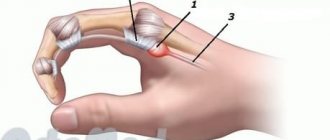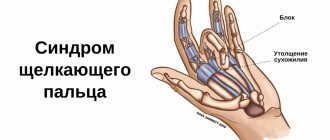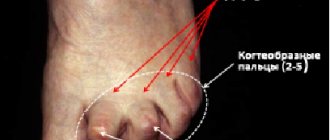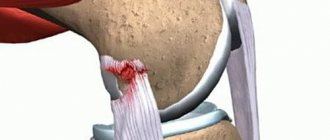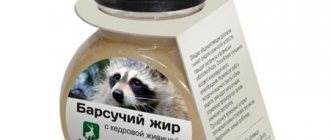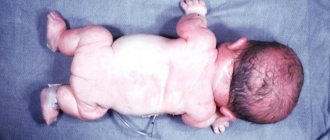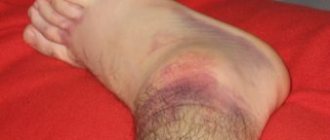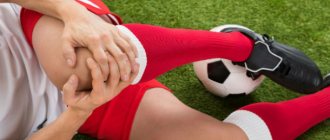Causes of the disease
The snapping finger is an explanation from the patient's side, i.e. the finger actually snaps when bent and extends with external force. Stenosing ligamentitis is an anatomical explanation. Stenosis means narrowing, and ligamentitis means inflammation of the ligament.
And now in more detail: the fact is that flexor muscles with bellies on the forearm and long tendons on the palm and fingers are responsible for bending the fingers. To move the fingers, these tendons must slide along the finger joints inside special osteofibrous canals. Sometimes this glide is disrupted due to inflammation of the annular ligament or the tendon itself, which is when the finger snaps and sometimes pain occurs when moving.
In most cases, this disease does not have any obvious cause. Predisposing factors may include rheumatoid arthritis, diabetes, gout, or minor trauma.
Stenosing ligamentitis in children – to operate or not?
And finally, the most important question is whether to perform surgery on a child with a snapping finger or not? There is no doubt that there are cases when all manifestations of ligamentitis in a child go away on their own. According to some studies, a pattern can even be drawn - the younger the pathology is noticed and the lower its degree, the greater the chances of self-healing. It is also logical that if a child is over a year old and the thumb does not extend either actively or passively, there is little point in expecting the symptoms to go away spontaneously. You can find out what is best to do in your situation, to operate or wait, and also get answers to other questions that interest you in a consultation with a doctor specializing in hand surgery for children.
Treatment for trigger finger
In my practice, I begin treatment with a local injection of steroids (diprospan). This procedure is very effective and relatively safe. If you ask the patient to move his finger before administering the drug, you can feel the tendons sliding at the tip of the needle. This sensation allows you to inject a small dose of the drug exactly where it is needed without damaging the tendon. As a rule, this quick manipulation gives an immediate effect.
Local injection in the area of the flexor tendons.
Treatment of stenosing ligamentitis at home
Diseases affect the patient’s quality of life and sometimes interfere with his ability to work. At the same time, they do not pose a direct threat to health or life. It is necessary to contact a specialized specialist to eliminate the defect, for which physiotherapeutic or surgical methods are used.
Hospitalization is usually not carried out; even surgery can be performed in a day hospital.
At home, the patient must follow all the instructions of the attending physician and minimize the load on the weakened ligaments. During the prescribed treatment period, it is important to completely relieve the hand from stress. No work that involves prolonged strain on the wrist should be performed. This applies to both household chores and activities that require fine motor skills (embroidery, fiddling with small parts, knitting). The speed of treatment depends on compliance with the principle of complete rest.
Plastic surgery of tendon defects
Plastic surgery of tendon defects - this type of plastic surgery is used in traumatology and orthopedics to eliminate tendon defects and contractures or restore the function of paralyzed muscles. The basis of plastic surgery on tendons is the suture of the tendon. Depending on the size of the defect and diastasis between the ends of the tendon, various types of local plastic surgery are used (ladder-shaped, stepped, etc.), as well as various modifications of the suture. Well-developed methods of plastic surgery to restore tendons and their function virtually eliminate the need for transplantation. Tendon transfer is used mainly for the restoration of the Achilles tendon, for the correction of torticollis, and for extensive contractures, using allografts. At the same time, the best results are obtained by transplanting thin tendons, since thick tendons often develop central necrosis, which impairs the functional effect.
Tendoplasty is one of the most common operations and involves replacing tendon defects with biological materials.
Depending on the timing, there are primary tendoplasty, performed before the primary wound heals, and delayed tendoplasty, performed at a later date. Depending on the number of treatment stages, tendoplasty can be one- or two-stage. The most widely used in clinical practice is delayed one-stage autotenoplasty, and less commonly, two-stage interventions. In the latter case, the task of the first stage of treatment is to create conditions favorable for replacing the defect with a graft. To do this, temporary implantation of polymer rods into tissues is carried out and other plastic surgeries are performed. Finally, depending on the type of graft, auto-, allo- and xenoplasty are distinguished.
The choice of tendon reconstruction method is based on an assessment of many factors, the most important of which are:
- Time elapsed since the injury;
- scar tissue changes along the tendons;
- skin condition, presence of its deficiency;
- condition of muscles, joints, bones.
ul
Treatment of other diseases starting with the letter - s
| Treatment of salmonellosis |
| Treatment of cutaneous sarcoidosis |
| Treatment of pulmonary sarcoidosis |
| Treatment of Kaposi's sarcoma |
| Treatment of uterine sarcoma |
| Treatment of Ewing's sarcoma |
| Treatment of type 2 diabetes mellitus |
| Treatment of type 1 diabetes mellitus |
| Treatment of seborrhea |
| Treatment of sepsis |
| Treatment of heart failure |
| Treatment of anthrax |
| Treatment of Budd-Chiari syndrome |
| Treatment of Guillain-Barré syndrome |
| Treatment of Gilbert's syndrome |
| Treatment of Parhon's syndrome |
| Treatment of polycystic ovary syndrome |
| Treatment of empty sella syndrome |
| Treatment of irritable bowel syndrome |
| Treatment of Sjögren's syndrome |
| Treatment of sinusitis |
| Treatment of systemic lupus erythematosus |
| Treatment of systemic scleroderma |
| Treatment of systemic sclerosis |
| Treatment of syphilis |
| Treatment of scoliosis |
| Treatment of somatoform disorders |
| Treatment of spinal stroke |
| Treatment of spondylosis and spondyloarthrosis |
| Treatment of laryngeal stenosis |
| Treatment of tracheal stenosis |
| Treatment of tetanus |
| Treatment of stomatitis |
| Treatment of ringworm |
| Treatment of subarachnoid hemorrhage |
| Treatment of subdural hematoma |
The information is for educational purposes only. Do not self-medicate; For all questions regarding the definition of the disease and methods of its treatment, consult your doctor. EUROLAB is not responsible for the consequences caused by the use of information posted on the portal.
Folk remedies
Many people wonder how to cure gout at home, which caused the development of ligamentitis? An addition to treatment are considered folk remedies, which are based only on natural ingredients and which will help get rid of one or another disease. Some of them include:
- Treatment with clay at home. Grind the clay to a powder or buy ready-made clay, then dilute it with water. After this, the mixture has a creamy consistency. Next, add 30 ml of apple cider vinegar and mix. The treatment is ready. Compresses are made on the affected finger, securing it with cellophane on top. The procedure is carried out over 2 hours.
- Horseradish treatment. You can make compresses with cabbage leaves and horseradish.
- Treatment of a hematoma that causes ligamentitis can be carried out using dry heat. To do this, you need salt, which is heated in a frying pan and then poured onto a cloth. Apply a compress to the required area, while waiting for the salt to cool completely.
- Hematoma can also be treated at home using wormwood. So, they grind the grass, place it in a jar and fill it with vodka. Leave the product to infuse for 7 days, then use it as compresses.
- You can use ointments prepared at home. Grind calendula flowers and mix with any cream. Leave the product to brew for 24 hours in a cold corner of the room. After the prescribed time, lubricate the affected area.
Dupuytren's contracture:
Dupuytren's contracture is a fairly common hand disease.
Most often the ring finger and (or) little finger are involved in the process. Often Dupuytren's contracture develops simultaneously on both hands. The exact cause of the disease is unknown. It is most common in middle-aged men. There is a clear hereditary predisposition to this disease. The incidence of this disease in men is several times higher than in women. Residents of Scandinavia, Ireland and people from Eastern Europe are most susceptible to this disease. The disease may have an acute onset, but in most cases, severe symptoms appear only several years after the onset of the disease. Normally, we can freely bend and straighten our fingers. With the development of Dupuytren's contracture, as a result of wrinkling of the palmar fascia, the ability to freely extend the fingers is impaired. In the initial stage of the disease, compactions in the form of nodules appear under the skin on the palm in the area of the 5th and 4th fingers. As the disease progresses, stiffness appears in the joints of the involved fingers. In severe cases of the disease, complete immobility of one or two fingers may develop, that is, the development of ankylosis. Patients seek medical attention for cosmetic reasons or because of hand dysfunction. In some patients, connective tissue nodes in the thickness of the palmar fascia are characterized by significant pain. In these cases, severe pain may also be a reason to consult a doctor. Read more about the treatment of Dupuytren's contracture .
Baths to prevent finger snapping
In addition to using the above folk techniques, it is possible to use special baths that will speed up recovery:
- For the bath you will need a sprig of pine needles. First, grind it, then add a liter of water and boil for a couple of minutes, and then leave to simmer for 30 minutes over low heat. Having completed the simmering process, the composition is filtered and when the temperature becomes tolerable for putting your hand into it, the procedure begins. The duration of the procedure is about 15-20 minutes.
- A salt bath, which is prepared using sea salt and a few drops of pine needles, will have a quick, anti-inflammatory effect. You need to keep your hand in the bath for at least 20 minutes. Suitable for everyday use.
- An elderberry bath is prepared from dry plant materials, which are filled with 800 ml of water at a temperature of 98 degrees. After this, you need to infuse for 30 minutes, and lower your hands for a 20-minute period of time. This recipe can be used twice a day.
general description
The immediate cause is narrowing of the tendon sheath in the area of the annular ligament on the proximal side of the main joint of the finger or thickening of the tendons. This is facilitated by:
- genetic determination;
- systemic connective tissue diseases;
- metabolic pathology;
- overstrain of fingers in work conditions.
My thumb history
I got Knott's disease on my right thumb. It all started almost two years ago, at the end of August 2015, while unsuccessfully diving into the sea (that’s a strong word, so I’ll put it mildly: jumping from the bridge into the water, I caught my thumb on its edge and felt a sharp pain. Most likely, there was a slight sprain ligaments
For 7-10 days, the dull pain reminded me of itself, which was helped by anti-inflammatory ointments and home rubs, and after a while the pain slowly began to fade away.
Imagine my surprise when, a month later, the pain in my finger began to grow again, becoming stronger day by day. Those same ointments, rubs, massages, and even “Almag” no longer helped - a device for therapeutic treatment in everyday life based on a pulsed magnetic field did not provide relief.
I won’t say that I experienced suffering, but when doing housework, wringing out laundry, a rag, where you need to bend your fingers, and especially when working, typing on a computer, the pain reminded itself every time.
One morning I was surprised to discover that I could no longer bend my thumb; it did not bend and, with effort, unbent with a click. This is such an unheard of effect). The road to the surgeon was inevitable and forced. Although I don’t like medical institutions.
Drug treatment of the disease
An experienced specialist immediately diagnosed and prescribed treatment:
- Any anti-inflammatory and analgesic ointment, the doctor did not name anything specific, I used Chondroxit ointment.
- Anti-inflammatory and analgesic drug Ibuprofen.
- The drug "Condronova" in tablets, combining chondroprotectors and anti-inflammatory elements.
- Physiotherapy procedures are also possible - electrophoresis, but for some reason I was not prescribed this type. The same “Almag” may well help, everyone has their own susceptibility.
- Rest of the finger and its rigid fixation in the hand with a specially designed fixation device, sold in health departments. You can buy thumb and wrist braces in the online sports medicine store
A follow-up appointment with the doctor was scheduled in 2 weeks.
The nature of finger ligamentitis can be briefly summarized as follows: against the background of stretching, an inflammatory process of the ligaments-tendons-joints occurred, which led to a thickening of the extensor ligament and difficulty in its movement along the guide channel.
The situation was aggravated by excessive stress on my finger while working at the computer, which was when I had a lot of work. I used this little pink mouse, which did not contribute to the correct position of the hand, further increased the load on it and caused an inflammatory process in the joints. Of course, I changed the pink “baby” one to an orthopedic one.
Thus, a summer injury, age-related changes in the body, plus monotonous, intense work without breaks at the computer with the wrong mouse - all this taken together provoked the development of trigger finger disease - Knott.
After two weeks, by the time of the next visit, practically little had changed in my condition, the finger still did not bend, maybe the pain had only slightly decreased.
The doctor rendered a verdict, without any doubt that he was right: “Operation!” To my surprise in his eyes, he softened and added, we won’t rush... but if it gets worse, come, we’ll make an incision on the ligaments.
Yes, I had nowhere to rush...
By this time I had scoured the entire Internet, unfortunately, I didn’t find a particular variety of advice on how to cope with the disease, there are very few folk recipes, after all, the disease is not so common. But something was found. That’s why I then thought that if I healed my finger, I would definitely write a blog about my case.
What is arthrosis of the fingers?
Arthrosis on the fingers (osteoarthrosis) is a degenerative disease that leads to limited mobility and loss of functionality of the fingers.
Due to age and other additional factors, joints wear out and cartilage tissue deforms. Photo of arthrosis of the fingers
Cartilage tissue covers the bone and reliably protects it from damage, reduces the load on the joints, making them more mobile. The joint fluid inside nourishes the cartilage and reduces friction, acting as a shock absorber.
Previous injuries, age, high physical activity, excess weight and other factors can lead to the development of the disease. There is a violation of the structure of bone tissue and the formation of specific growths on the edges of bones - osteophytes. The synovial fluid becomes thick and contains fragments of damaged cartilage. The disease affects not one joint, but several at once (interphalangeal, metacarpophalangeal). The process covers not only the index or thumb, but also other fingers.
Depending on the stage of development of the disease, thickening of the joints may appear - Heberden's and Bouchard's nodes, which arise against the background of multiple arthrosis (polyosteoarthrosis). These are new growths in the form of cones and can grow to the size of a pea. When elasticity decreases between joints, friction occurs, which turns into an inflammatory process, which causes deformation of bone tissue. Heberden's nodes are located near the nails, and Bouchard's nodes (a manifestation of osteoarthritis) occur on the joints.
Type of arthrosis on the fingers
If we compare arthritis and arthrosis, the latter is classified as dystrophic-degenerative diseases and in most cases occurs without inflammatory processes. In turn, arthritis may not involve other organs and systems. If inflammation is observed during diagnosis, then the joint development of arthritis and arthrosis in the hand area is possible.
Hand disease can significantly impair a person’s quality of life. Affected joints limit physical performance and can lead to disability. With the development of pathology, the patient will no longer be able to perform professional tasks if it is related to work and basic household functions. The disease most often affects women over 40 years of age. The risk of the disease increases with the onset of menopause.
